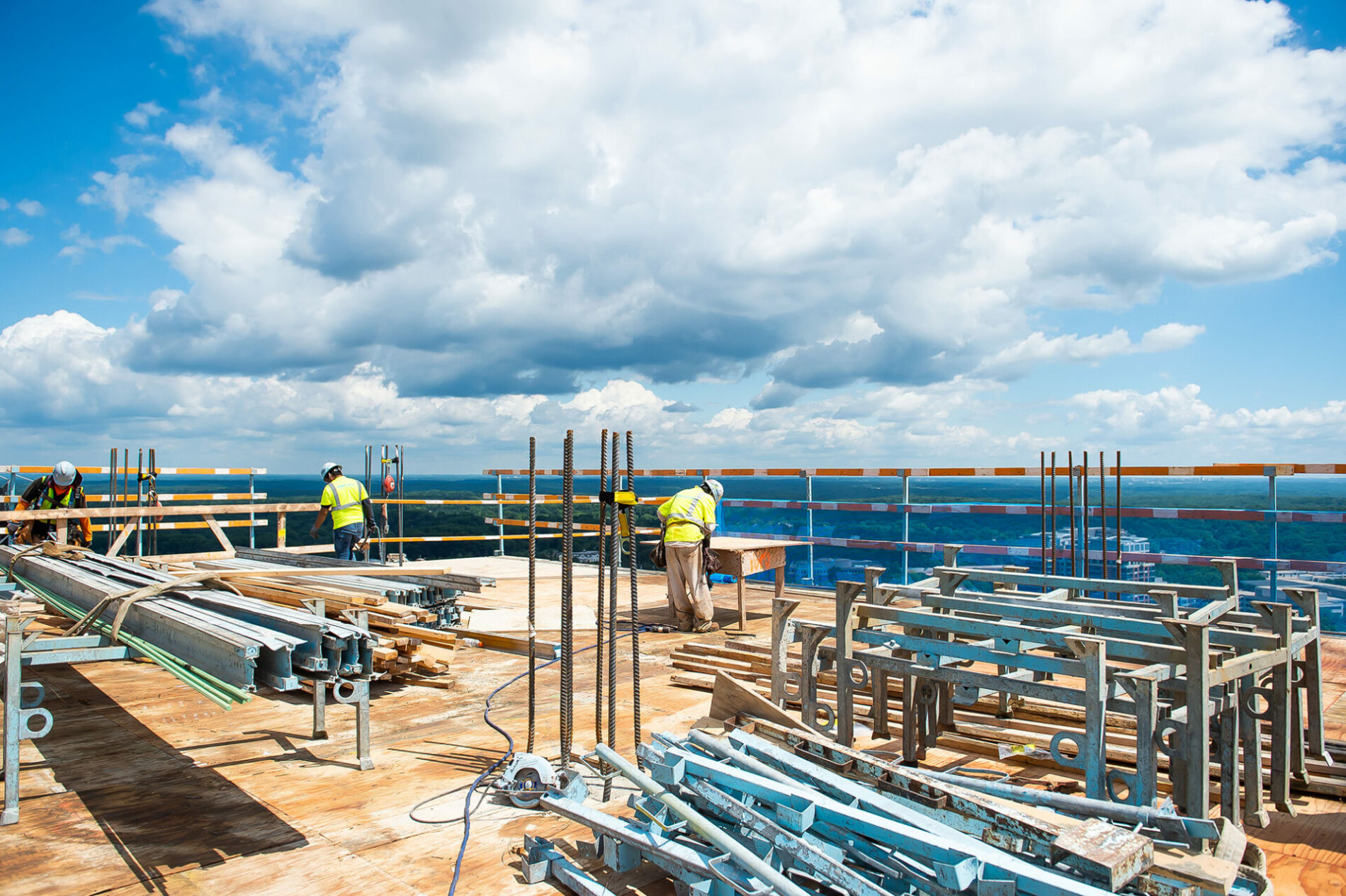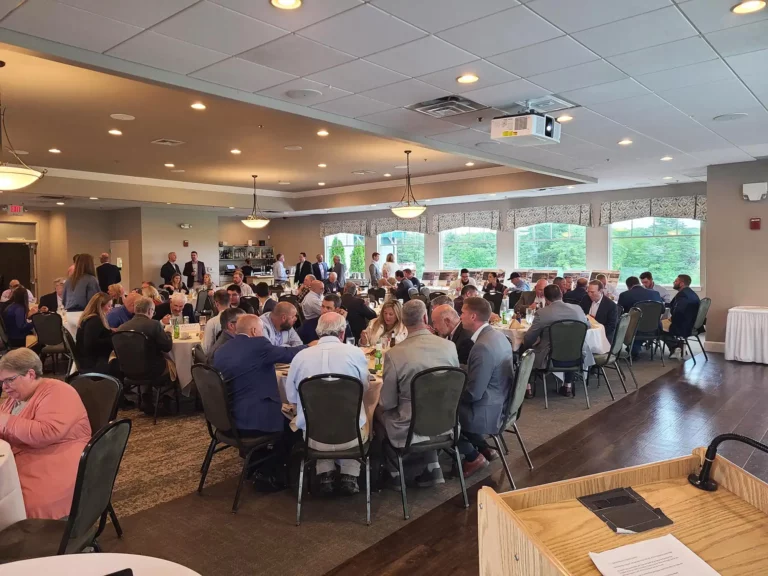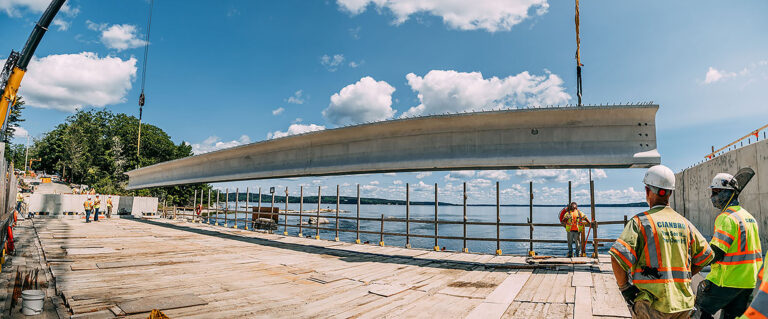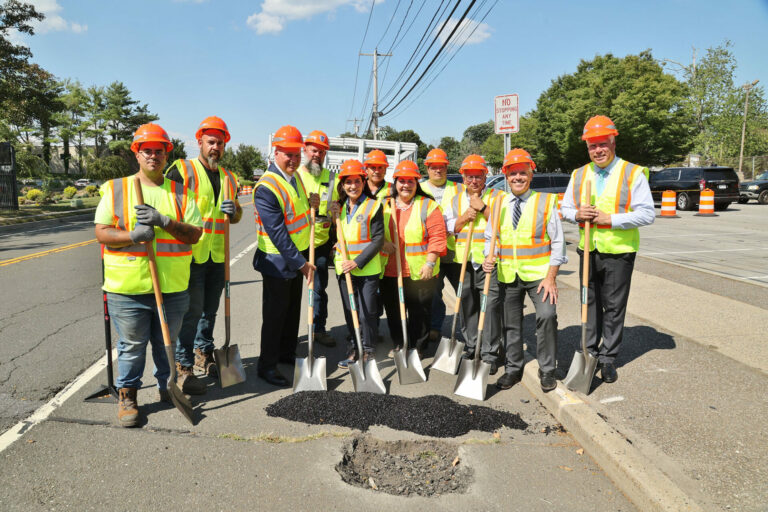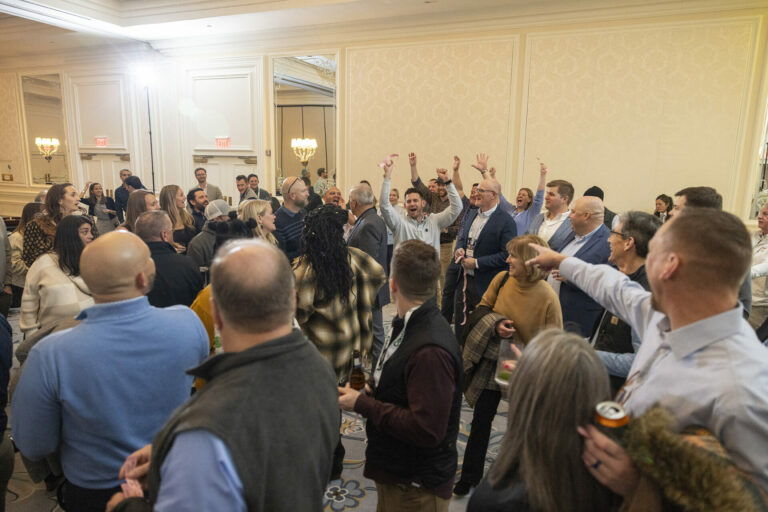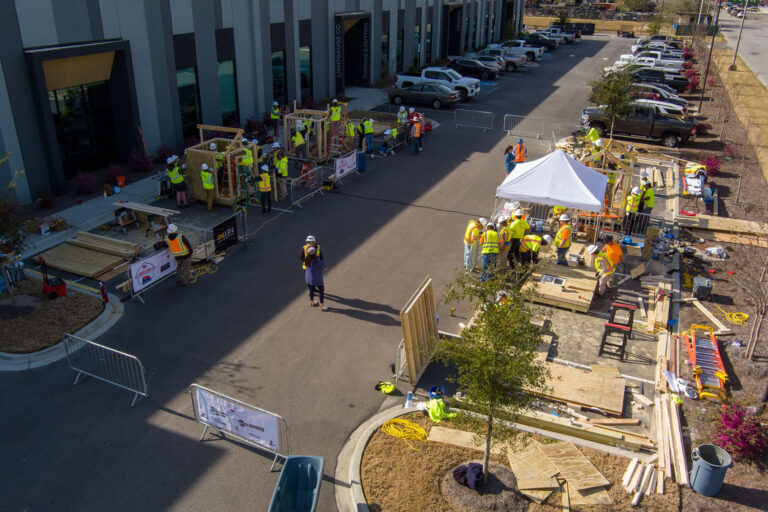It’s been a year of change for ABC Empire State, the New York branch of Associated Builders and Contractors, but one thing remains the same for the construction trade association representing contractors across the United States: its steadfast commitment to its nearly 450 members who rely on it for the latest in industry-specific training, education, and advocacy.
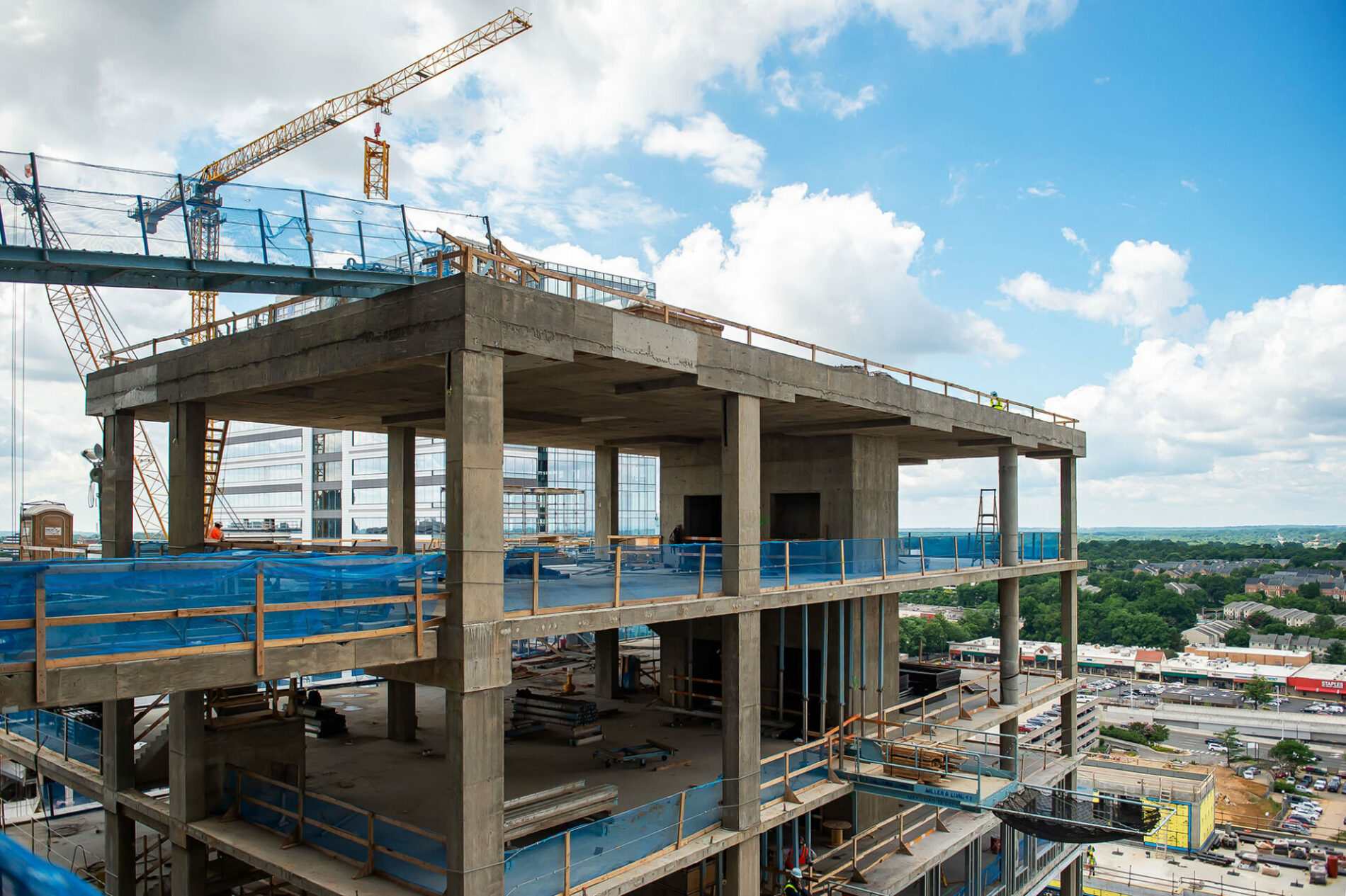
The association supports its members across six regional offices spanning the State of New York, including Buffalo, Rochester, Syracuse, Albany, New York City and Ronkonkoma Long Island.
“We’re meeting [our members] where they are, providing them with the opportunities they need,” says Brian Sampson, ABC Empire State’s President. These opportunities include 30 different instructors delivering hybrid education and training programs, covering the gamut of subcontractor trades, everything from electrical to plumbing pipe, fitter sheet metal, HVAC, concrete carpentry, drywall and more.
In addition to the six regional offices, ABC Empire State operates four regional training centers in Buffalo, Rochester, Albany, and Ronkonkoma. These sites are fully equipped training centers, able to deliver the performance testing side of the related instruction needed to meet registered apprenticeship program qualifications. These state-of-the-art centers play a crucial role in equipping the next generation of skilled laborers with the knowledge and experience required to be successful. Skills, that Sampson believes, can be a fast-tracked ticket to a productive and secure middle-class life.
It’s no secret the construction industry is currently grappling with significant challenges, workforce shortages being one of the most pressing. Sampson explains that the issue is not confined to construction alone. “It’s the labor force in general,” he notes. “Unemployment is pretty low. There’s a lot of people that are not attached to the labor market and they’re not interested in working, and that puts further strain on us.”
A common misconception about the construction industry is its outdated image of shovels, picks, and wheelbarrows. “While those are still a part of a job site, like everything else, it’s gotten technologically more sophisticated,” says Sampson. “The construction of today is vastly different than what it was ten or even twenty years ago.”
Adding to the challenge, about 40% of the current construction workforce is expected to reach retirement age within the next four years, creating a significant gap. Addressing this, Sampson points out, “One of our roles as an organization is to be champions for the industry, visiting technical schools, high schools, middle schools, and community centers.”
The ABC Empire State Chapter actively promotes construction as a viable career path. “We talk about the pathway to the middle class and how registered apprenticeships can be another tool to get ahead,” Sampson explains. Unfortunately, there is a stigma attached to skilled trades and manufacturing, partly due to the education system’s focus on two- and four-year institutions as measures of success.
Sampson stresses the need for advocacy, particularly in changing perceptions among parents. “It’s OK if your kid doesn’t go to college. The construction industry is great, and you can quickly reach the middle class without the burden of college loans,” he asserts.
Looking ahead, the ABC Empire State Chapter is committed to building a sustainable workforce for the future. “You can’t outsource this industry to India or somewhere else. You can’t build a road there and then bring it over here to install it. You have to build where the project is located,” Sampson concludes. “It’s a great path to the middle class and a safe industry for a lasting career.”
In addition to ongoing advocacy work, ABC Empire State is proud to be celebrating 55 years as an organization, an incredible accomplishment given New York is a traditionally blue, union-friendly state.
“To have this longevity is something we as a chapter are very proud of,” remarks Sampson. Most recently, ABC Empire State received its 4-year accreditation through the National Office, which makes the organization a high performing chapter within the broader Associated Builders and Contractors Association.
The ABC Empire State Chapter attributes its success to the dedication of its staff and board and as Sampson puts it “Everyone has a very clear commitment to the membership and know what our value proposition is and how we can deliver on what we say we’re going to do for our members.”
One of the chapter’s latest achievements is the establishment of the largest multi-trade, multiple-employer apprenticeship program ever granted by the state of New York. “We now possess a 10-trade program, state-registered apprenticeship, fully compliant with federal ERISA laws,” Sampson explains. “We fought very hard for this, and it took a lot more time than it needed to, simply because of the politics of New York.”
This program has become an integral tool in the growth of the chapter. “Our program takes on the compliance requirements to have registered apprenticeships, so our members aren’t structured in a way that is necessarily helpful to them in being compliant with both state and federal laws. We created the program to help them out,” Sampson notes.
The chapter is fast approaching over 100 participating employers in the program and will likely cross over 100 apprentices in the next few weeks. “Now, because we have that program, our members, when confronted with apprenticeship mandates either by the state of New York or a state agency or a local government, can access our program and be able to bid that work,” says Sampson. “Should they win it, they can deliver that and keep people employed.”
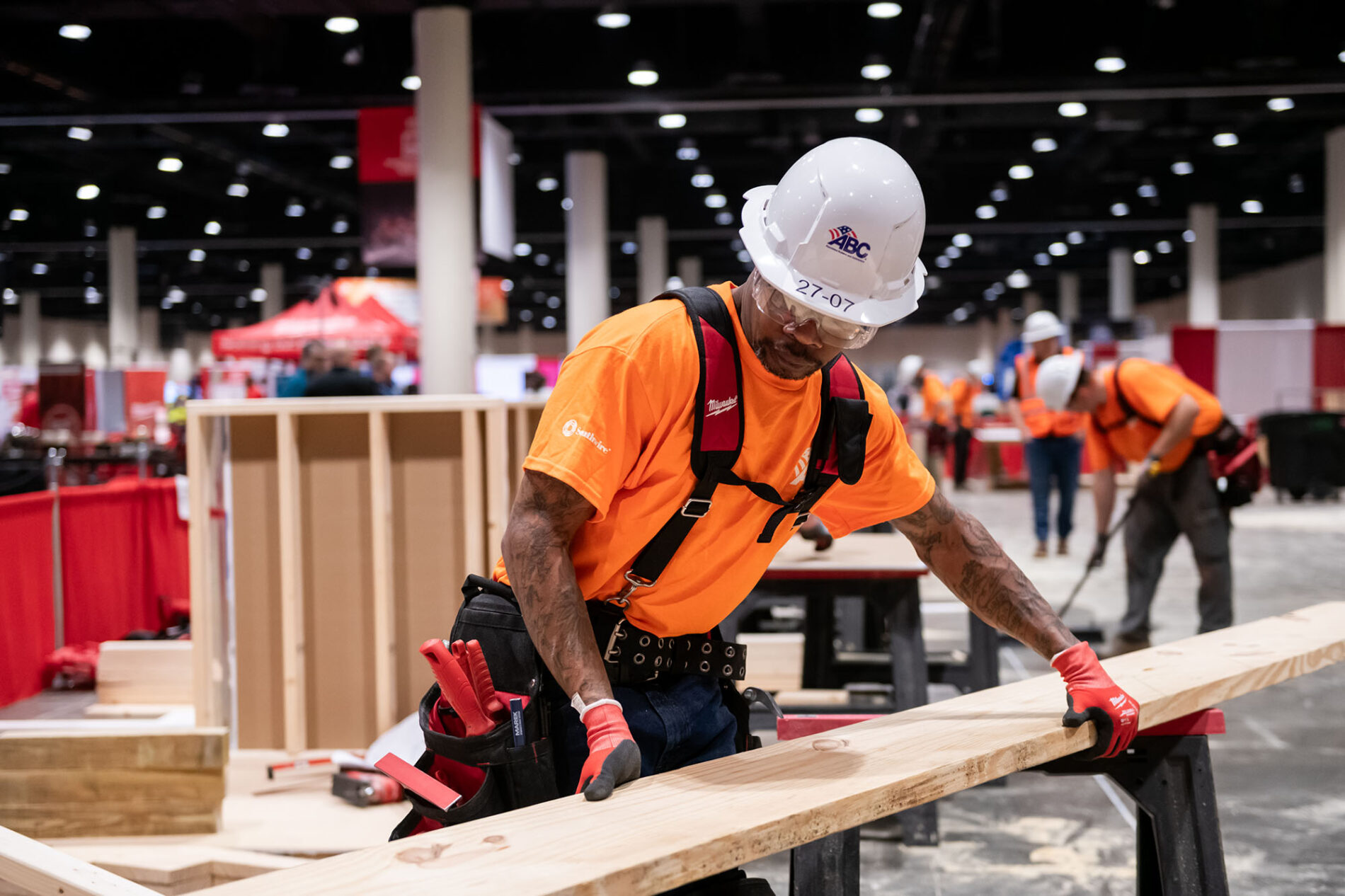
This lofty goal, set by the board, has been achieved after 2-and-a-half years and several hundred thousand dollars in legal fees. “We got it done, and we’re excited about it,” Sampson concludes, highlighting the chapter’s commitment to innovation and member support.
The association is also working tirelessly to advocate for members in the wake of ongoing legislation and licensing changes, posed to have a major impact on current and future projects and their associated costs. Take, for example, the significant changes in New York City’s building code via the SSP legislation.
While many updates are standard, a notable change is the redefinition of “major buildings.” Previously defined as buildings 10 stories or taller, the new code, effective December 2023, lowers this threshold to 7 stories or 75 feet. This redefinition imposes new requirements, including the need for a site safety professional (SSP), site safety coordinators, concrete superintendents, and fire system superintendents.
“If your permit expires after January 2025, you could be caught in the new definition, adding substantial costs that weren’t initially factored in,” he explains. This retroactivity can add an estimated $1 million to $1.5 million to project costs.
The chapter is actively working with the Department of Buildings and the City Council to amend this retroactive aspect, particularly concerning affordable housing and school construction projects. “We don’t need to make affordable housing more expensive by retroactively applying a new code,” says Sampson. “We’re hopeful for a decision soon that will allow these buildings to continue operating under the previous definition.”
“We’re hopeful for a decision soon that will allow these buildings to continue operating under the previous definition.”
Another code revision that also took place in 2022 included the introduction of new licensing requirements for operators of articulated boom cranes, rotating telehandlers, and mini cranes by New York City’s City Council and the Department of Buildings (DOB). This change aimed to increase regulatory oversight in response to the growing presence of non-union operators in the industry, which has significantly expanded and affected the market share traditionally held by unionized operating engineers.
The new regulations stipulate that, effective November 7, 2024, anyone operating these types of equipment in New York City will need to be licensed. This effectively means that operators will need to be unionized to continue working in the city.
“We spent a lot of time working with the Department of Buildings and the City Council and the industry, and now what we have is what we think is a is a fair licensing,” says Sampson. The new licensing stipulates that people who require them will have access to licensed drivers, but those drivers will be grandfathered in based on experience.
“We went from a code that was really going to flip the industry on its ear and probably grind construction to a very slow trickle in the city, to now being in a place where the DOB can issue licenses and track workers and companies, all with an eye toward making the industry safer.”
The ABC Empire State Chapter remains committed to advocating for practical solutions that support the industry while ensuring safety and compliance, including solutions that help tax abatement programs, like 421A work better for the community and its contractors.
The 421A Project in New York City was a tax abatement program designed to encourage the development of affordable housing in the five boroughs. However, two years ago, the legislature in Albany allowed the program to expire, citing concerns over costs and manipulation by some developers. This decision led to a halt in many affordable housing projects.
Recognizing the need for government support in building affordable housing, the legislature, pushed by Mayor Adams, reinstated the 421A program in the latest budget, extending it to 2031. This reinstatement reactivates stalled projects, offering new opportunities to increase the availability of affordable housing in New York City.
Additionally, a new program called 485X was introduced to replace 421A for future projects. This program includes stringent pay floors, requiring wages of around $71 per hour or 66% of the prevailing wage for the trade, depending on the project’s location. While 485X extends the abatement period by an additional five years, there are concerns that these high wage requirements may make it too expensive to develop affordable housing.
The ABC Empire State Chapter is navigating these changes by advocating for fair and practical legislation. They emphasize the need for a balanced approach that supports both the industry and the workforce without imposing prohibitive costs. Sampson explains, “We focus on whether legislation is appropriate and fair to the industry and the people employed within it and whether it benefits taxpayers.”
The chapter is also addressing the potential impact on bidding processes. “When you see things like project labor agreements, it forces all or most employees to be pulled from local union halls, which our contractors, who are not signatory to collective bargaining agreements, typically do not want to do,” Sampson notes. “We fight PLAs because they’re not good for the industry, owners, or taxpayers.”
Prioritizing safety, advocacy and education, ABC Empire State is looking to a future that has its members’ best interests at heart, including passing new legislation to mitigate a troubling trend in fraudulent construction accident claims cropping up all over New York City, driven in large part by, Sampson says, organized crime. This is a result of criminals exploiting a loophole in an antiquated New York law, which ABC Empire State is actively fighting against.
“We have a piece of legislation that we think will certainly help,” says Sampson of ABC Empire State Chapter’s efforts to stop this trend.
The goal for the Chapter is to remain ten steps ahead in a constantly changing industry with many moving parts. Its ongoing accomplishments and 55-year staying power speak for itself and Sampson looks forward to a future of growing membership and even more milestones for the chapter itself, ultimately creating an industry that is safe, productive, and fruitful for its membership.
Want to learn more or become a member yourself? Visit the ABC Empire State website.









